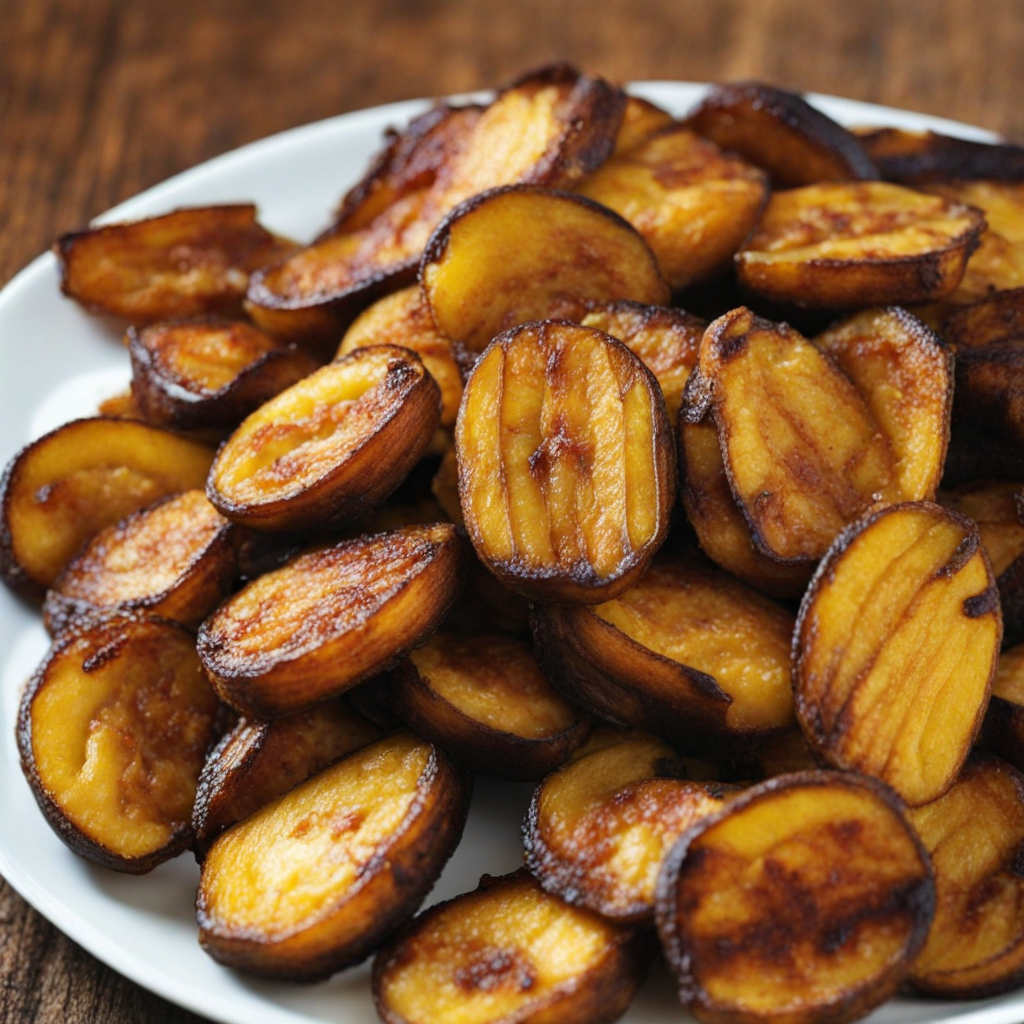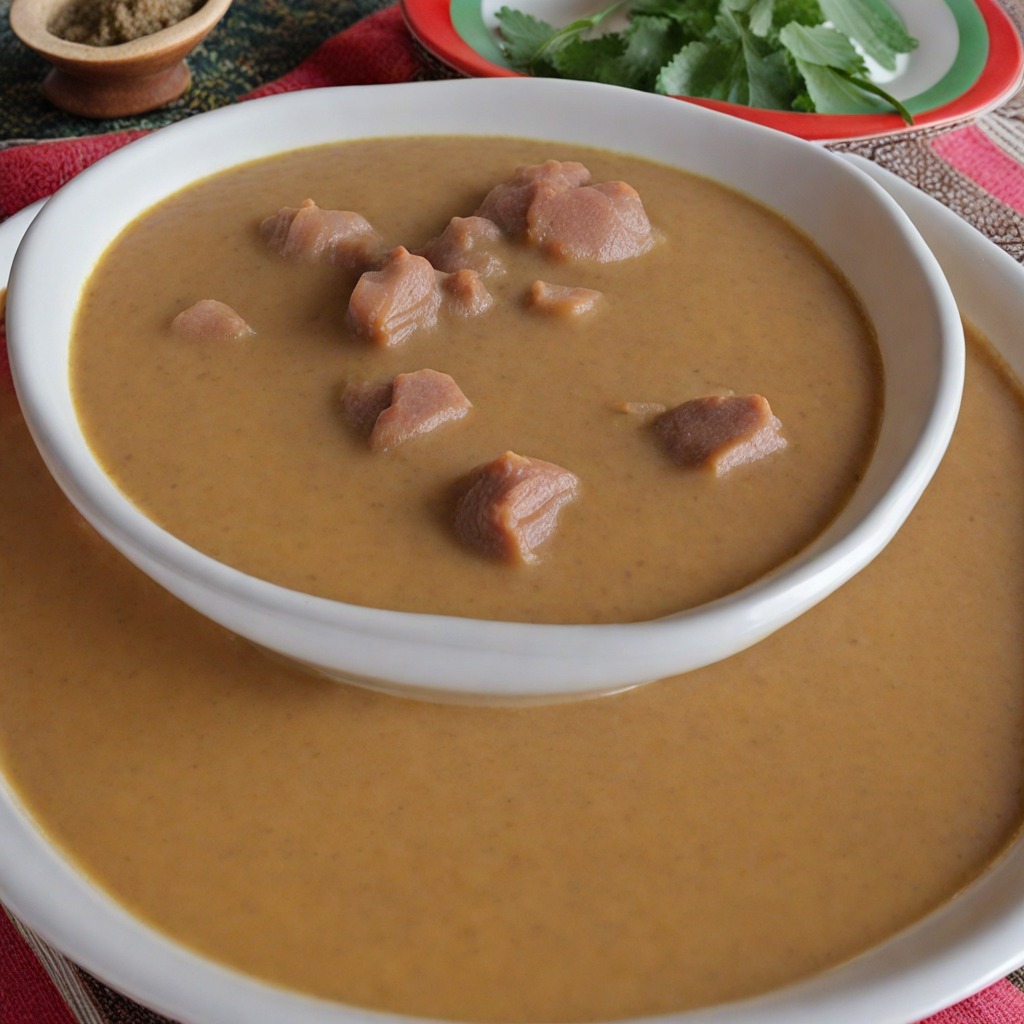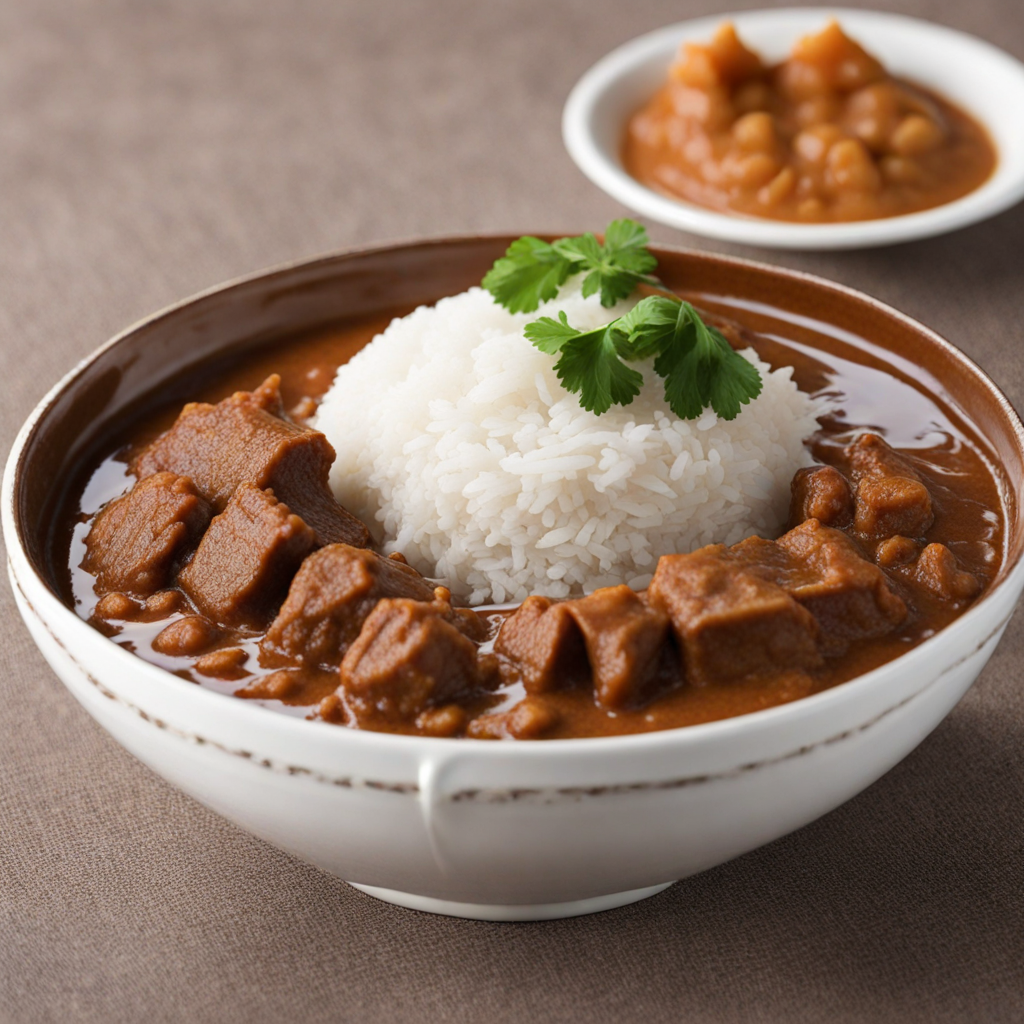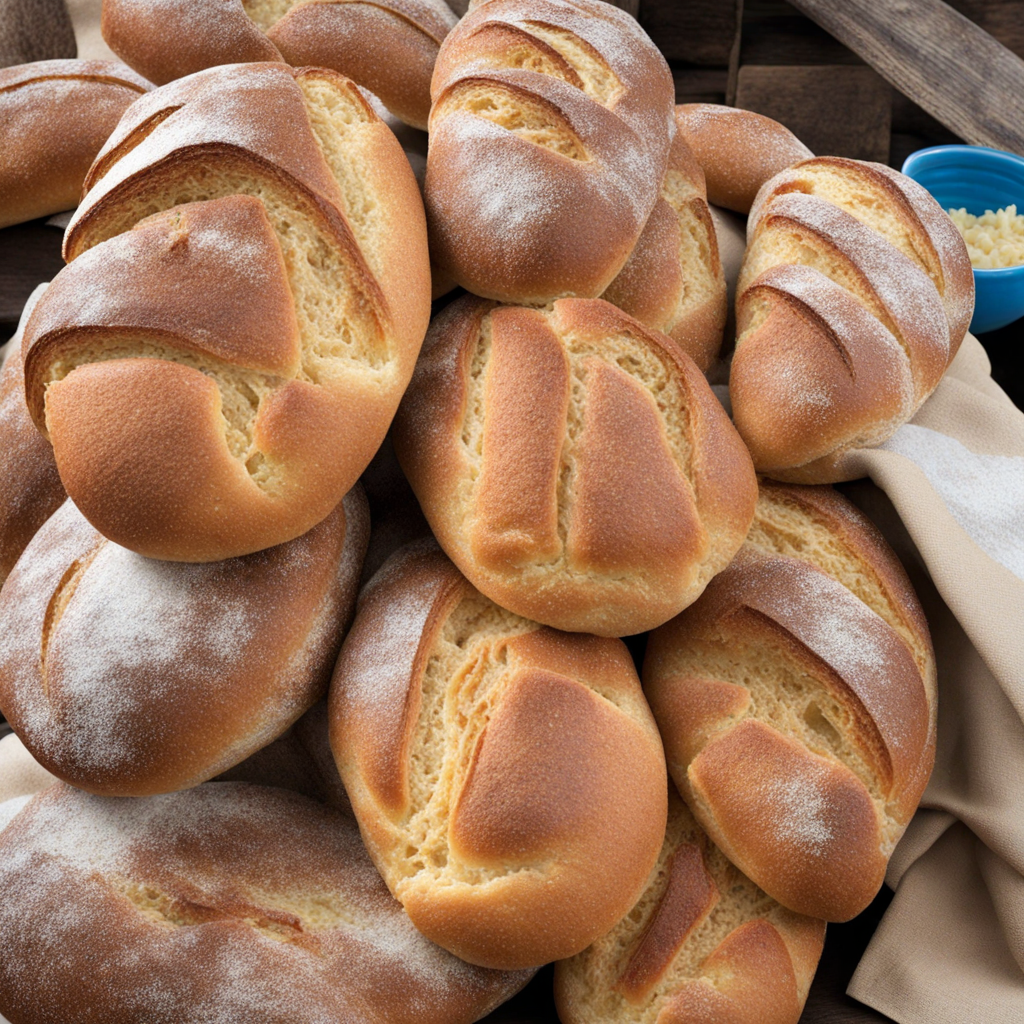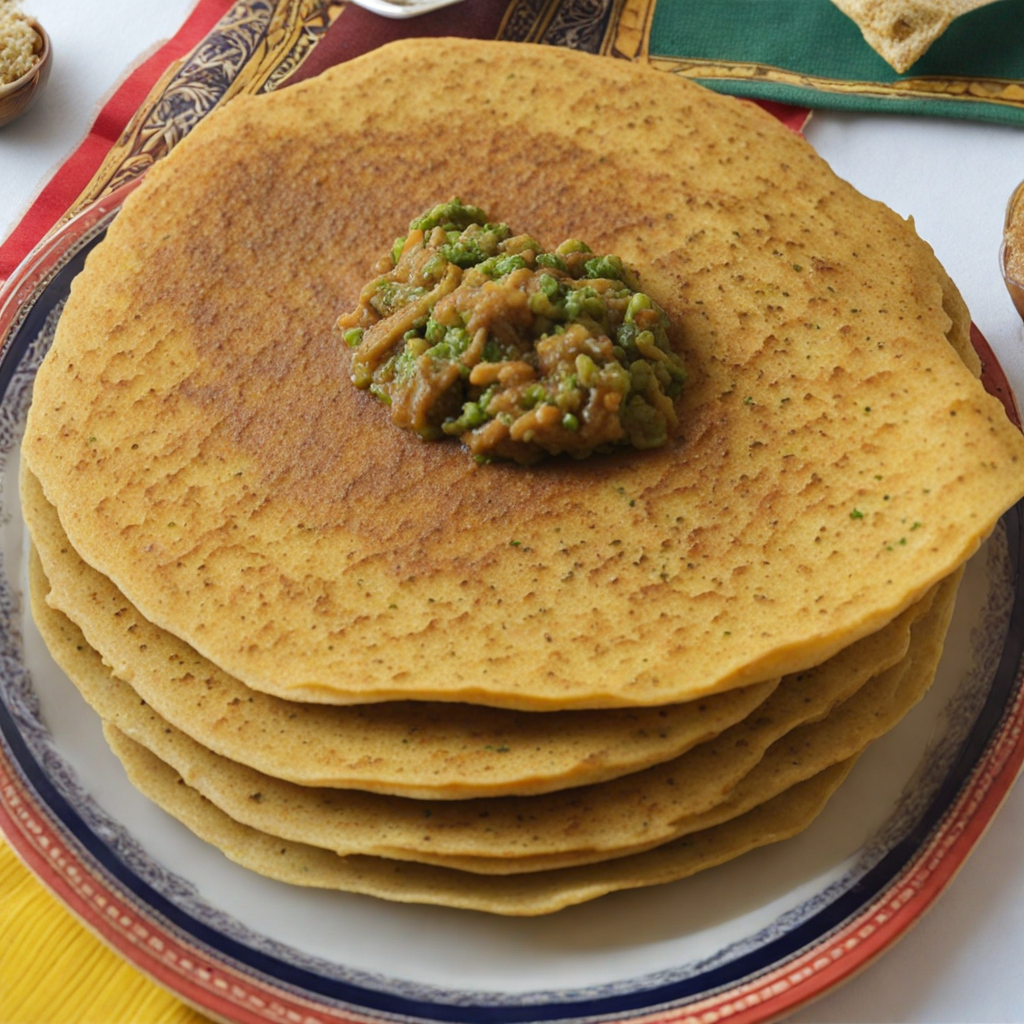Fried Plantains
Fried plantains are a beloved dish in Guinea, celebrated for their sweet and savory flavor profile. Made from ripe plantains, these tropical fruits are sliced into thick, diagonal pieces and fried until they achieve a golden-brown exterior, while maintaining a soft and creamy interior. The natural sweetness of the plantains caramelizes during the frying process, creating a delightful contrast with the slight crispness on the outside. This dish is often enjoyed as a snack or side dish, offering a satisfying and comforting experience for those who indulge in it. In Guinea, fried plantains are typically served alongside a variety of main dishes, such as stews or grilled meats, allowing their subtle sweetness to complement the savory flavors of the meal. They can also be enjoyed with spicy sauces or dips, adding an extra layer of taste that enhances the overall experience. The versatility of fried plantains makes them a popular choice in Guinean cuisine, appealing to both locals and visitors alike. Beyond their delicious flavor, fried plantains hold cultural significance in Guinea, representing a staple food that is deeply rooted in the culinary traditions of the region. They are often prepared during family gatherings and celebrations, bringing people together over a shared love for this comfort food. Whether enjoyed on their own or as part of a larger feast, fried plantains embody the warmth and hospitality of Guinean culture, making them a must-try for anyone looking to explore new and exciting flavors.
How It Became This Dish
Bananes Plantains Frites: A Culinary Journey Through Guinea #### Origins and Introduction Bananes Plantains Frites, or fried plantains, are a quintessential dish in Guinea and across many West African nations, where plantains, a staple food, play a vital role in the culinary landscape. The plantain, scientifically known as Musa paradisiaca, is believed to have originated in the region that encompasses modern-day Malaysia and the Indo-Pacific islands. From there, the plantain spread to Africa, where it became a prominent crop, especially in tropical climates. In Guinea, plantains are cultivated abundantly. The country's rich, fertile soil combined with a warm climate creates the perfect conditions for growing this versatile fruit. The process of frying plantains, particularly the starchy, less sweet variety, has deep roots in Guinean culture. Traditionally, plantains were not only a dietary staple but also a symbol of hospitality and community. #### Cultural Significance In Guinea, food is more than just sustenance; it is a reflection of social identity, cultural values, and traditions. Bananes Plantains Frites exemplifies this connection. The dish is often served at gatherings, celebrations, and communal meals, acting as a bridge between people. Fried plantains are enjoyed as a side dish, a snack, or even a main course, depending on the context. The preparation of Bananes Plantains Frites is a communal activity. Families often gather to peel, slice, and fry the plantains, creating an atmosphere of camaraderie. The act of sharing food is deeply rooted in Guinean culture, where meals are often communal affairs, emphasizing unity and togetherness. Plantains also hold cultural significance beyond their culinary contributions. In many West African societies, including Guinea, plantains are associated with fertility and prosperity. They are often included in rituals and ceremonies, symbolizing abundance and nourishment. This cultural reverence for the plantain elevates Bananes Plantains Frites from a mere dish to a culinary emblem of the Guinean spirit. #### Development Through Time As Guinea's historical narrative unfolded, so too did the culinary practices surrounding plantains. The introduction of various cooking techniques, influenced by both indigenous traditions and external interactions, has shaped the way Bananes Plantains Frites is prepared today. In pre-colonial times, plantains were primarily boiled or roasted. However, with the advent of frying techniques—likely introduced by Arab traders and later European colonizers—the method of preparing plantains evolved. Frying not only enhanced the flavor but also provided a delightful texture that made the dish appealing to a larger audience. During the colonial period, the transformation of Guinean cuisine was marked by the introduction of new ingredients and cooking techniques. As French colonial influence permeated the region, the culinary landscape began to diversify. French cooking styles, which often involved frying and seasoning, found their way into local kitchens, further popularizing Bananes Plantains Frites. Post-independence, Guinean cuisine experienced a renaissance as the nation sought to reclaim its culinary identity. Chefs and home cooks emphasized the importance of traditional ingredients, including plantains. Bananes Plantains Frites became a symbol of national pride, representing the resilience and creativity of the Guinean people. #### Preparation and Variations The preparation of Bananes Plantains Frites is an art form in itself. The process begins with selecting the right type of plantains. While both green and ripe plantains can be used, the green variety is preferred for frying due to its firmer texture and less sweet flavor. The plantains are peeled, sliced into diagonal pieces, and then deep-fried until golden brown, creating a crispy exterior while retaining a soft interior. Variations of this dish abound across different regions and cultures. In Guinea, Bananes Plantains Frites are often served with a spicy pepper sauce or alongside grilled fish and meats. They may also be accompanied by a savory stew, enhancing the dish's flavor profile. In other West African countries, variations might include the addition of spices or herbs, reflecting local tastes and preferences. The dish also adapts to modern culinary trends. In urban centers, chefs experiment with Bananes Plantains Frites by incorporating fusion elements, such as serving them with avocado crema or creating plantain sliders. This adaptability showcases the enduring relevance of plantains in contemporary cuisine while honoring their traditional roots. #### Global Influence and Modern Reception As globalization has expanded culinary horizons, Bananes Plantains Frites have gained international recognition. They are often featured in African restaurants worldwide and are increasingly popular among food enthusiasts seeking to explore diverse flavors. The dish resonates with people beyond Guinea, appealing to those who appreciate comfort food that tells a story of tradition and community. Social media has played a pivotal role in the global spread of Bananes Plantains Frites. Food bloggers and influencers showcase the dish, highlighting its simplicity and deliciousness. Home cooks are inspired to recreate the dish, often sharing their own variations and adaptations. This digital age has allowed Guinean cuisine, particularly dishes like Bananes Plantains Frites, to reach a broader audience, fostering appreciation for its cultural significance. #### Conclusion Bananes Plantains Frites is more than just a dish; it is a testament to Guinea's rich culinary heritage and the cultural significance of plantains within the community. From its origins in Southeast Asia to its establishment as a beloved staple in Guinea, the fried plantain has transcended borders and time. It embodies the spirit of togetherness, hospitality, and resilience that characterizes Guinean culture. As the world becomes increasingly interconnected, Bananes Plantains Frites stands as a delicious reminder of the importance of food in shaping cultural identity. Whether enjoyed in a bustling market in Conakry or a cozy kitchen in a foreign land, this dish continues to tell the story of a people united by their love for plantains, celebrating their history and the bonds that food creates. Through every bite, one can savor the essence of Guinea—its warmth, vibrancy, and enduring traditions.
You may like
Discover local flavors from Guinea


